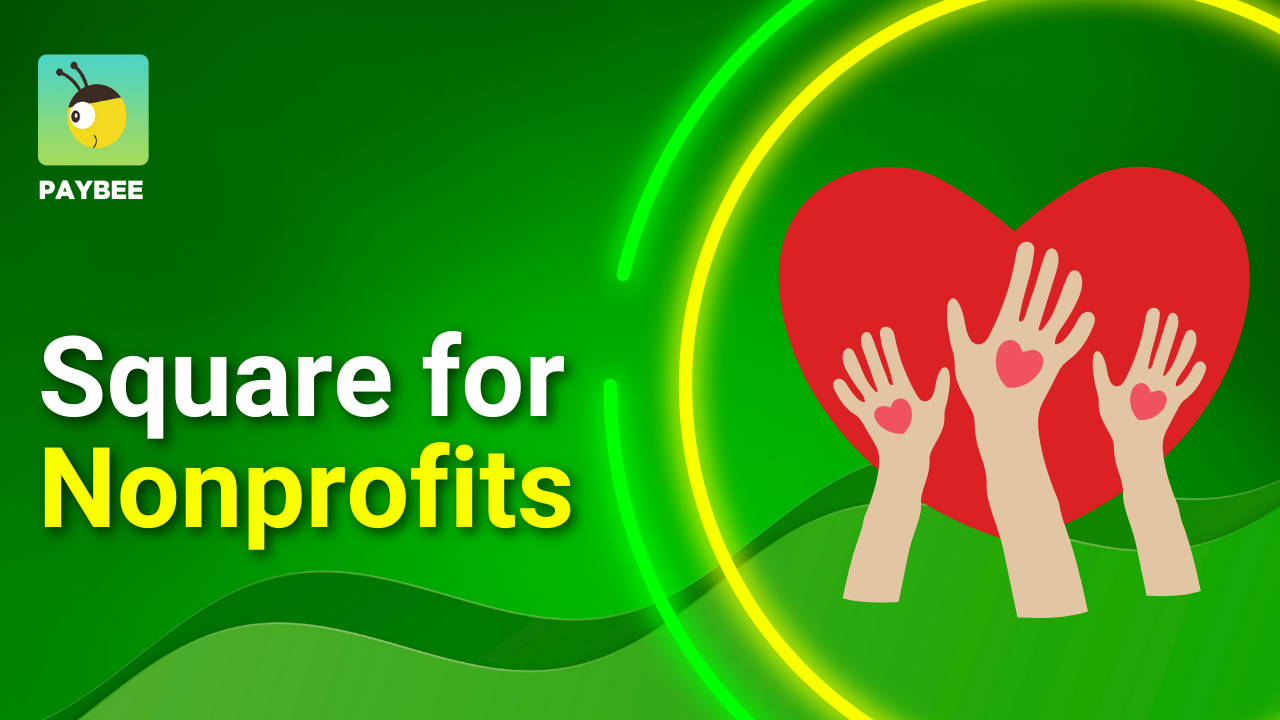
Comprehensive Guide to Unrestricted Grants for Nonprofits in 2025
Comprehensive Guide to Unrestricted Grants for Nonprofits in 2025
Quick Answer: What are unrestricted grants and why are they important?
Unrestricted grants are named so because they are unrestricted in the way you can spend them, they can be used at your discretion, making them some of the most versatile and valuable grants for your organization.
Introduction to Unrestricted Grants and Long-term Flexible Funding for Nonprofits
One of the most vital forms of funding for any nonprofit organization is unrestricted grants. These types of grants play a critical role in helping organizations address a wide range of needs for nonprofits and are vastly different from restricted grants. Unrestricted grants provide an organization with the ultimate freedom, flexibility and decision making power to allocate much needed funds to where it is deemed most critical in their overall day-to-day operations.
Having access to unrestricted funds means that a nonprofit can direct crucial and much needed funding to areas not traditionally covered by restricted or project-specific grants. To highlight a few, areas like staff salaries, infrastructure, program expansion and innovation and more.. In this way, unrestricted grants become key to supporting long-term overall organizational health and sustainability of a nonprofit. Moreover, unrestricted grants can serve as emergency discretionary funding during crisis situations and emergencies.
In 2025 and beyond, unrestricted grants are becoming more essential than ever. Philanthropic funders and corporations are recognizing more and more the growing need for greater unrestricted grants to support non-profits organizations beyond one off projects.
Some of the key trends for unrestricted grants this year include an increase in demand for unrestricted grants or Trust-Based Philanthropy. Every year, more and more funders are embracing trust-based models. This focus stems from the greater desire for a more long-term relationship versus short-term one time donations.
Additionally there is a greater inclination towards equity and inclusion for doling out awards as well as an increased focus on capacity building where funders are increasingly focusing their support on long-term investments in infrastructure prioritizing internal development of staff, long-term sustainable planning, implementing and upgrading digital systems and overall organizational infrastructure.
By supporting critical everyday operations and long term organizational health, unrestricted grants constitute an essential and vital tool for nonprofits to wield. A tool that can help nonprofits to ensure that they continue to provide services to their target community with greater efficiency and stability. effectiveness and sustainability and overall resilience in a nonprofit's mission and goals.
What Are Unrestricted Grants for Nonprofits?
Unrestricted grants for nonprofits are funding awards that a nonprofit organization can leverage at their complete discretion to support their mission. Unrestricted grants are critical for nonprofit organizations to support their core missing rather than just funding one project or program.
As a powerful tool, unrestricted grants can be used to provide the nonprofit with the flexibility to decide how the funds will be used and what areas are most critical or in need to target. These grants allow an organization to allocate funding where it is needed most to help keep day-to-day operations continue to run smoothly. Generally, this means financing general operational costs and perhaps most crucially, the salaries of the nonprofit’s employees.
Importantly, unrestricted grants are hugely beneficial in that they can be leveraged to achieve budgetary stability in the short-term, as well as long-term if they are multi-year awards.
Compared unrestricted grants, restricted grants or project specific awards, highlight some stark differences. For one, restricted grants are funding awards that must be spent on a specific project, program or activity approved or targeted by the donor. Restricted grants generally come with reporting obligations, a timeline for funds disbursement and a compliance regime by the donor. These types of funds can help fund new initiatives or specific programmatic activity but not help cover any overheard costs or expenses.
Types of unrestricted grants vs types of restricted grants:
General Operations Support Grants (Unrestricted)
These types of unrestricted awards help support an organization’s day-to-day expenses and organizational stability. They help cover costs like salaries and rent and utilities.
Capacity Building Grants (Unrestricted)
These awards are aimed at strengthening a nonprofit’s infrastructure or the know-how and skills of the organization’s staff through training or workshops. Likewise, these grants could be used towards creating organizational efficiencies by improving system processes or upgrading and implementing new technology, among others.
Program or Project Specific Grants (Restricted)
These funds are restricted and must be used towards a specific designated project, activity or goal. They cannot be used for any other purpose and donors will subject organizations to reporting and compliance regimes.
Capital Grants
These awards are restricted to upgrading, improving, renovating or purchasing physical assets like infrastructure, building, major equipment, etc.To highlight an example of an unrestricted grant award, let’s look at Microsoft’s Corporate Grant. Over the years, Microsoft has awarded hundreds of nonprofits with unrestricted funding for software and general support. These awards have allowed these organizations to modernize operations, expand reach and scope of services delivery, while strengthening operational resilience.
Benefits of Unrestricted Funds for Nonprofits
It is important to understand that unrestricted grants provide nonprofits with financial freedom. Unrestricted grants are essentially a vote of confidence and an extension of trust by the grantor to the organization’s leadership and mission. These types of grants enable long term fundamental change through operational flexibility, promoting innovation, supporting resilience and amplifying community impact.
Without a doubt unrestricted grants are the most valuable forms of funding a nonprofit can receive. These are several benefits of unrestricted grants that a nonprofit can leverage to their advantage.Here are the top benefits:
Operational Flexibility
Unrestricted funds allow organizations to support critical day-to-day operations enabling nonprofits to allocate funds where it is most needed. Unlike restricted funds which are often limited to specific programmatic activities Unrestricted funds for example, can be directed towards administrative functions or program delivery.
Long-term Sustainability
Unrestricted funds can strengthen a nonprofit's long-term viability by helping to cover recurring expenses and enabling strategic planning. Unrestricted funds can indeed reduce reliance on short-term and project specific grants so that organizations can invest in growth and plan for future needs and challenges.
Coverage of Core Operating Costs
A common challenge among nonprofits is finding resources to fund essential everyday expenses like salaries, utilities, tech and system upgrades and more. The overwhelming majority of restricted grants are project specific. Unrestricted grants can fill this void and bring financial stability to the organization in order to keep running operations and programs running smoothly.
Innovation and Adaptability to Emerging Needs
Another great benefit of unrestricted funds is that it allows nonprofit organizations to test new directions or ideas, and launch innovative pilot programs to increase effectiveness, scale and impact. This kind of flexibility allows organizations to foment creativity and allows nonprofits to remain relevant and effective. In addition, unrestricted funds allow nonprofits to respond quickly to emerging needs or a crisis the organization needs to respond to.
Organizational Resilience
Unrestricted grants allow nonprofits to enhance their organizational resilience by enabling organizations to build stronger internal systems, retain skilled and vital staff and keep services consistent. This financial freedom to focus on their needs and bring about financial stability often leads to greater and more lasting community impact. In essence, unrestricted grants allow nonprofits to thrive in their missions while creating meaningful change.
Strategies for Securing Multi-Year Unrestricted Grants for Nonprofits
As noted in the previous section, unrestricted grants provide nonprofits many benefits from financial flexibility, covering operational expenses, and others. Securing grants in general can be difficult. And securing this type of funding, however, can be challenging. Securing unrestricted funds requires a targeted and much more precise approach precisely because most donors are only willing to provide restricted funds for greater control and oversight.
In this section, we will lay out for you 5 strategies and actionable steps that can help nonprofits secure unrestricted funding.
1.Research Funders Prioritizing Flexible Funding.
It is vital to focus your funder research on identifying flexible donors. Identifying early on flexible donors will save time and increase likelihood of success. Ford Foundation is a great example of one. Through their BUILD initiative Ford has donated millions of dollars to supporting unrestricted multi-year funding for nonprofit organizations
To accomplish this it is helpful to use platforms like Candid’s Foundation Directory Online or GrantStation. Here, you can filter for flexible donors by filtering for “general operation support”.
Likewise, organizations need to study not just a potential funder’s website, but their annual report, past grantees to confirm that they in fact prioritize unrestricted or flexible funding.
2. Build Relationships With Grant-makers Through Regular Updates.
Remember that awarding unrestricted funds is essentially like a vote of confidence. Donors and funders want to know and trust whom they support. Establishing and maintaining good communication before submitting a proposal goes a long way.
An effective step to take in this direction is to provide the potential donor with quarterly updates and reports, impact stories, etc. Invite the donors to site visits and events to deepen engagement.
3. Emphasizing Organizational Impact.
When crafting a proposal, be sure to emphasize the organizational impact of the funds in order to write a more compelling proposal. Grantors of unrestricted funds want to see evidence that organizations can deliver long-term impact.
By highlighting success stories and major accomplishments with measurable outcomes that illustrate systematic impact and community or beneficiary transformation that fit into the overall mission and vision an organization can make a compelling case for effective use of future funds awarded.
4. Leverage Existing Donors and Networking for Funding Sources
A big part of finding unrestricted funders is to leverage your existing donors and their relationships. Networking is key to any nonprofit’s strategic channels for fundraising.Warm introductions from current donors or board members can lead to a greater and new pool of potential donors more inclined to providing unrestricted funds.
Approaching key members and supporters for warm introductions, sharing newsletters, and even joining philanthropic associations and attending events can expand an organization's potential for unrestricted funds
5. Demonstrate Transparency and Financial Stability
Critically, potential donors of unrestricted funds want to make sure that funds are managed responsibly and in a transparent manner. Clear and precise reporting helps build trust. Make sure to include data to demonstrate financial health and organizational resilience. Sharing annual reports that include both financial and impact reports will also help.
Unrestricted Grants for Nonprofits Trends in 2025
Several key trends have emerged regarding unrestricted grants in 2025. Here is what to look for: according to the Trust-Based Philanthropy movement, over the last few years there is a clear and growing willingness among funders and grantors to offer multi-year unrestricted support and to ease the application process and reporting requirements in order to encourage grantees to direct resources to urgent priorities. This shift, from project-by-project giving toward flexible funding has indeed accelerated in 2025.
Rise of Trust-Based Philanthropy
There is growing evidence of funders looking for stronger and long-term relationships with nonprofits rather than one time projects. This has led to an expanded adoption of trust-based philanthropy. In addition, funders are also looking to move away from the overly bureaucratic model that comes with restricted or project based funding. This is great news for nonprofits as grants and awards aimed at supporting general operations areas became more available.
Increased Focus on Equity, Inclusion and Underserved Nonprofit Organizations
A noticeable trend is that funders are increasingly focusing their financial support to organizations led by historically marginalized communities such as black, indigenous and people of color. Recent data supports this trend as a large proportion of unrestricted funds are being awarded to these groups Moreover, capacity building and leadership development is now considered to be an integral part of equity among donors, funders and grantors.
Increasing Multi-Year General Operating Support
Rather than fund one-off projects or programs, donors are increasingly more inclined to offer multi-year core support and build lasting relationships This type of long-term effort allows nonprofits to plan longer term, retain and train staff and aids organizations in overcoming uncertainty and volatility by investing in strategic priorities.
Stronger Demand for Demonstrable Impact, Transparency and Data
Unrestricted grants and funds does not mean less emphasis in measurable outcomes. Quite the contrary. With the increase in unrestricted funds, donors have higher expectations of rigorous quantitative and qualitative data and measurable impact. The use of SMART goals in proposals, having monitoring and evaluations systems in place to track outcomes and financial transparency have all become prime elements that potential donors of unrestricted grants look for.
Growth in Corporate Unrestricted Support
When it comes to corporate giving,unrestricted grants are viewed increasingly in favorable light if they are deemed to unequivocally support the overall health of the non-profit. Social Corporate Responsibility has influenced this trend overall with many corporations funding organizations for a long time when their missions align.
Challenges in Securing Unrestricted Support for Nonprofits
While unrestricted funding provides many benefits like flexibility to focus on organization capacity, cover key staff salaries, or respond to emerging needs, nonprofits often will come across significant obstacles and challenges to securing these types of funds.
What challenges do nonprofits face in securing unrestricted grants? Nonprofits face numerous challenges like funder preference for restricted grants, high competition, and resource-intensive applications when securing unrestricted grants.
Through a mix of operational efficiency, strategic and impactful storytelling, and leveraging strong relationships, nonprofit organizations can drastically increase the likelihood of securing unrestricted awards despite all the aforementioned challenges.
Key Challenges
Funder Preference for Project Specific Grants.
Funders often prefer project-specific grants over unrestricted funding. Mainly because it is easier to measure the impact of a specific initiative or project. This focus on measurable outcomes tied to a specific project makes grantors more inclined to prefer project specific grants.
High Competition and Limited Unrestricted Grant Opportunities.
Straightforwardly, the availability of grant opportunities, that is, the pool of these types of funding are much smaller compared to restricted or project-specific grants. This means that the competition for these awards is much more intense and higher. Organizations are then faced with the challenge of standing out even more. Oftentimes, compelling narratives and strong track records goes a long way in getting noticed.
Time-Intensive Application Processes
The application process for unrestricted funds can put extra strain on the resources of a nonprofit organization as they require the inclusion of extensive data, demonstrating transparency, and very detailed reporting. It is no wonder then that smaller nonprofit organizations often struggle to meet these deadlines while simultaneously continuing to deliver services to their target community.
Possible Solutions to Overcoming Challenges
Build Strong Relationships with Funders While Leverage Data and Impact Measurements
Trust is a vital element for grantors and funders to award unrestricted grants. Building strong relationships is key towards this goal. It is important therefore to engage the right funders with regular reporting and updates and compelling success stories so funders can better understand the impact and effectiveness of the organization’s efforts.
Collaborate and Network
Networking and partnering with other organizations and similar nonprofits can uncover new opportunities for unrestricted funding sources. Steps like joining nonprofits associations and attending philanthropic events are a great way to broaden the scope of the networking and collaborative efforts with other organizations.
Sources of Unrestricted Grants for Nonprofits
There are three primary sources of unrestricted grants: foundations, corporate giving programs and government programs. Understanding each source is important for nonprofits and organizations to improve their effectiveness in choosing which grant source is better suited for their needs.
Foundations
Foundations remain one of the primary sources for unrestricted grants geared towards nonprofit organizations. Foundations are often large private and family owned or managed organizations. Many of which focus heavily on trust-based philanthropy. These sources tend to prioritize long term organizational health of a nonprofit over project specific goals and outcomes
One clear example of a Foundation is the W.K Kellogg Foundation. By providing unrestricted flexible funds to nonprofits, the Kellogg Foundation has been able to support racial equity, community engagement and leadership initiatives that make up the Foundation’s primary focus.
Corporate Giving Programs
Corporate giving programs include programs like Corporate Social Responsibility or CSR, as well as, employee matching gifts and volunteer support.
Corporate Social Responsibility has played a big role in corporations’ philanthropic endeavours, Corporate giving programs have even become a part of a corporation;s brand identity and corporate values. Corporations will often focus their support on nonprofits who are aligned with their owner corporate values.
Microsoft for example supports digital equity and education initiatives with access to unrestricted flexible funds. Likewise, John Deere provides unrestricted support for nonprofits that are focused on community development and education so they can allocate the funds to where they are most needed.
Government Programs.
It is true that the majority of government awards and grants are project specific and therefore restricted. Certain government sources for funding however, can be quite flexible. This is especially true of certain areas such as housing, community development and social services.
One glaring example is the Department of Housing and Urban Development’s Home Investment Partnership Program or HOME. This key program provides States and local governments “block grants” to allocate towards housing or community development needs. Block grants from the government allow for significant discretion on how to spend the funds and with less oversight and can be used for administrative and operational purposes.
The Department of Human Health and Human Services, as well as, the Department of Education also award capacity building grants that allow for discretionary spending with the aim of strengthening organizational infrastructure.
Success Stories of Unrestricted Grants for Nonprofits
As we have seen, unlike restricted grants that are typically tied to a specific project or initiative, unrestricted grants give nonprofits organizations the leverage and flexibility needed to cover vital day-to-day operations costs, strengthen organizational structures and invest in long-term sustainability efforts. Let’s now turn to real life examples and success stories of unrestricted grants in action that illustrate how unrestricted grants empower nonprofits towards long-term action and generate long-lasting impact.
A Success Story: The Ford Foundation Helps Nonprofit Expand Services
This case study highlights the Ford Foundation unwavering support to help organizations expand their services In addition, this case highlights how unrestricted grants can catalyze growth and innovation In this particular case, a mid-sized non-governmental organization and nonprofit was awarded $500,000 by the Ford Foundation.
Prior to this award the organization was limited to small, project based funding sources. This made innovation difficult. Upon being awarded the $500,000 dollars, the nonprofit organization was now in a position to innovate and expand their services beyond its core housing program.
The extra funding allowed the organization to hire additional staff and launch new tenant legal aid programs while also establishing an emergency rental assistance fund. Moreover, the grant's discretionary nature allowed the nonprofit to also invest in new and upgraded technology that in turn permitted them to serve more clients through virtual medium.
After only 24 months, the organization was now serving twice as many families thanks to the Ford Foundation's unrestricted grant support.
A Success Story: Microsoft Helps Nonprofit Strengthen Infrastructure
Microsoft awarded a small community nonprofit organization that focused on workforce development with a large unrestricted grant. Before having received this award, the organization relied mainly on outdated systems and a severely limited staff capacity. Thanks to the Microsoft award however, the organization was able to pump much needed funding into areas it deemed critical but not covered by project specific grants.
The funding from Microsoft;s unrestricted grant went towards overhauling the organization's digital infrastructure and allowed them to invest in cloud based data systems, training for staff on technologies and more. In addition, Microsoft’s unrestricted grant allowed the organization to hire a full-time development director to lead the diversification efforts of its funding sources.
As a result of this much needed investment, the organization was able to greatly improve efficiency and position itself a local leader in workforce development.
FAQs on Unrestricted Grants for Nonprofits
How much are unrestricted grants for nonprofits?
Unrestricted grants for nonprofits typically range from $5,000 to $500,000, depending on the funder and organizational need.
Why are unrestricted grants harder to obtain?
There are many factors that make unrestricted harder to obtain but the most obvious one is that the funders prefer restricted grants to ensure accountability for specific outcomes. Unrestricted grants require a much greater level of trust and confidence in the requesting organization leadership and stewardship.
How can a nonprofit qualify for unrestricted grants?
An organization has strong qualifications if they demonstrate strong governance, financial transparency, clear impact and trustworthiness. Fostering long-term relationships with funders is key.
How can nonprofits effectively report on unrestricted grants?
Recipient nonprofit organizations should always document and share impact stories, financial summaries, organizational improvements to maintain funder confidence and transparency.
How do unrestricted grants support long-term stability?
Unrestricted funding enables nonprofits to plan strategically, and invest in staff and systems as well as diversifying programs and encouraging innovation. In this way, flexible funds are key to strengthening long term capacity and resilience of the organization.
Conclusion: Maximizing Impact with Unrestricted Grants for Nonprofits
Let’s recap on the basics of unrestricted grants.
Why are unrestricted grants for nonprofits critical in 2025? Unrestricted grants for nonprofits are critical in 2025 for providing flexibility, fostering innovation, and ensuring sustainable operations amid economic challenges.
Unrestricted grants offer many benefits to nonprofits organizations. These benefits include operational flexibility, long-term sustainability, as well as, support for core operating costs, promoting innovation and adaptability to emergency, as well as, crisis response capabilities and overall organizational resilience. In this way, nonprofits can maximize the impact of flexible funding awards.
Recall that effective strategies that can drastically increase the chances of attaining unrestricted grants vary from focusing research funders to prioritizing flexible funding from the start. Building relationships with grant-makers through regular communication. Likewise, it is important to emphasize organizational impact and leverage existing donors. Networking is a vital strategy for finding the right funding sources that are open to unrestricted grants. Finally, another effective strategy to implement in order to secure unrestricted funds is to actively demonstrate financial transparency and stability. This can be accomplished through good communication and clear reporting of programmatic activities for example.
When looking for unrestricted grants, keep in mind the primary sources of unrestricted grants are foundations, corporate giving programs and government programs. Understanding each source is important for nonprofits and organizations to improve their effectiveness in choosing which grant source is better suited for their needs.
Although organizations seeking unrestricted funding often face numerous challenges like funder preference for restricted grants, high competition, and resource-intensive applications when securing unrestricted grants there are several steps you can take to overcome them.Some of these strategies include nurturing strong relationships with the right funders or leveraging strong data and convincing reporting as well as compelling storytelling.
Perhaps what is most evident is the vital role unrestricted grants play in not just allowing but encouraging innovation and boosting organizational resilience. Indeed, unrestricted funds allow organizations to launch innovative pilot programs or test new strategies. Likewise, they allow for critical organizational long-term investment and financial stability. Making the nonprofit more resilient to unforeseen and everyday challenges.
It is clear by now that unrestricted grants can and often do play a major and decisive role in ensuring a nonprofit's long-term success. The importance of such grants should not be overlooked. If you are a nonprofit decision maker looking to secure the future and success of your organization, take action now and follow some of the strategies mentioned in his article.
Remember to check out platforms like Candid’s Foundation Directory Online or GrantStation.
For more insights and tools on grant management check out this article, here.
Start Fundraising






